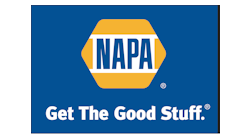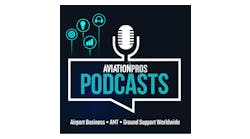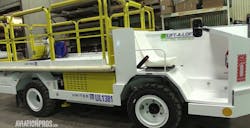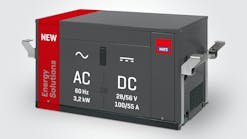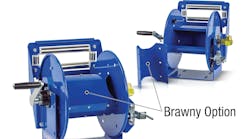By Scott Strong, manager of training and compliance, Global Aviation Services LLC
Picture this if you will: a piece of equipment with a gremlin in the electrical system. We have all seen it in the shop — or worse yet — been the guy tasked with finding the problem on a 20-year-old piece of equipment where all of the wires are the same color and the wiring diagram that we have is probably accurate, or at least close.
Laying out around the piece of equipment is a set of jumper cables that we are using to provide a good power and ground. We also have our DVOM, test light and a mess of jumper wires.
This is where the favorite tool in my box comes out to play. That tool is a “Power Probe III” and if you do not have one in your shop, you should. It is a DVOM, test light, polarity checker and jumper wires all in one. It is equipped with a rocker switch that allows you to provide power or ground to a circuit, as well as an alligator clip to provide a constant known good ground. Last week, I had a beltloader where the conveyor would not move. After opening up the rear electrical junction box, which also housed the relays, I was able to determine with the help of my tool that we had an 8-volt drop in the control circuit, which did not allow for enough voltage to power the relays properly. I was able to power the relays with the probe and the belt functioned properly. After working back through all of the wires for the four sets of directional controls, I was able to determine which set of controls was causing the problem.
Upon opening the switch box, there was a wire that had been pinched and caused a “slight” short to ground. Not enough to melt wires or blow fuses, just enough to draw down the voltage to the point where things could not function. After repairing the wire, this unit was back in service. In an hour this repair was diagnosed and completed, and without the power probe would have taken dramatically longer.
Another tool in my box that many GSE techs overlook is the needle adaptor for the end of our grease guns. I do not mean the needle designed to pierce tie rod end boots, but the dull-pointed needle that can be used to push in the ball on the end of a grease fitting and then fill the fitting. Many dollies, bag carts and loaders have grease fittings that are hard, if not impossible, to reach. With this tool even hard-to-reach fittings are accessible and, by the way, our gun is not now stuck on the fitting. The NAPA part number for this tool is #715-1251.
Many of the younger guys in our industry have never seen a refractometer, but this is a great tool to have in your shop also. In two seconds, you can accurately determine the freezing point of engine coolant as well as check the condition of battery cells on the numerous pieces of electrical equipment being used on our ramps. In practice, I find it easier and faster than using the test strips that are in most of our shops. If you have a refractometer in your shop, I recommend dusting it off and if you don’t, it would be a great addition to your arsenal of tools. If you do purchase one, be sure to get one that you can calibrate in the field with a drop of water. This will ensure decades of accurate use. You can purchase one of these from your MAC tool man. The part number is #RB727.
Being a professional in our industry requires having the proper tools to perform our job, as well as the understanding or training to be able to use them effectively. These are three tools that I would not be without.

